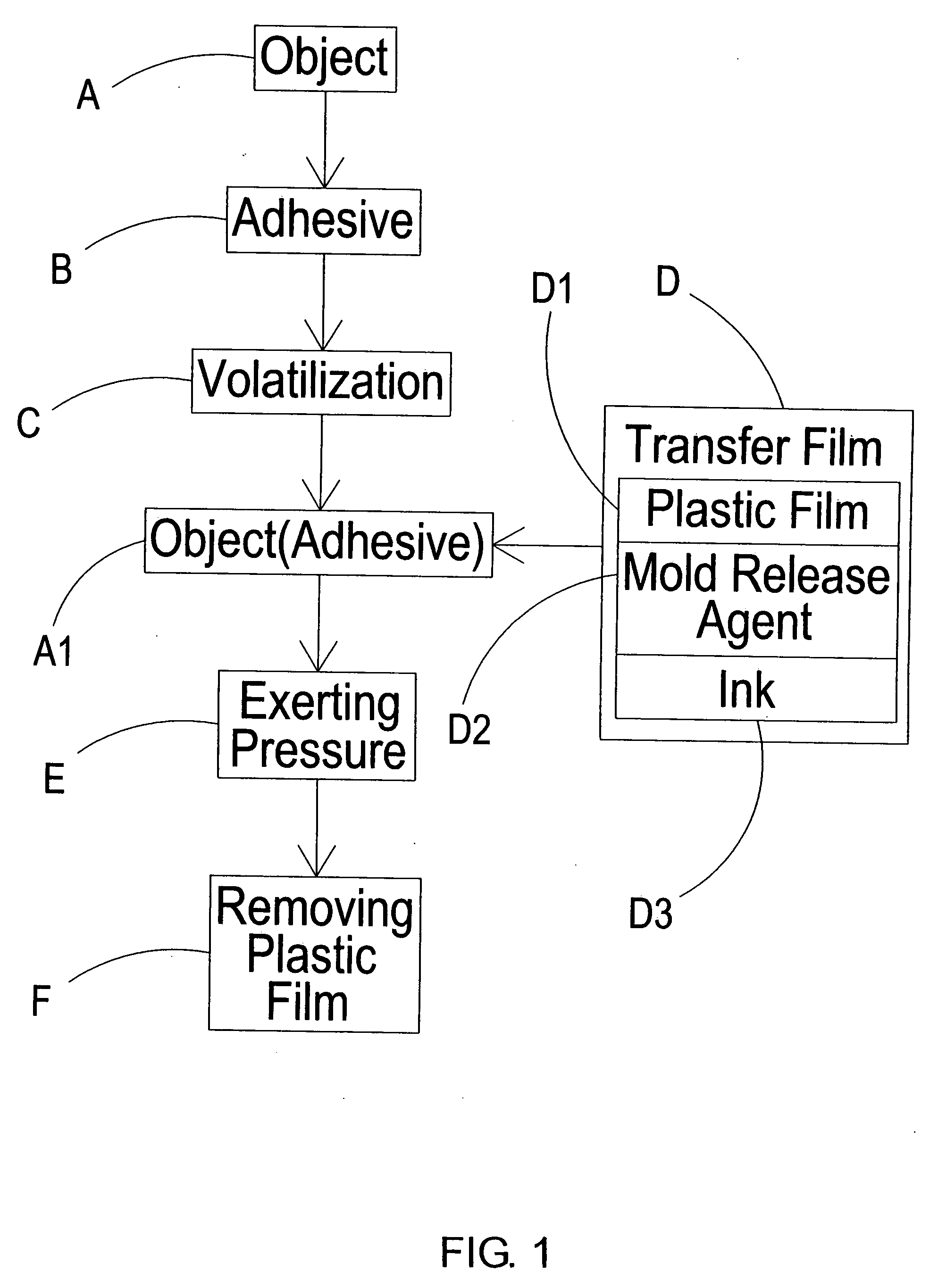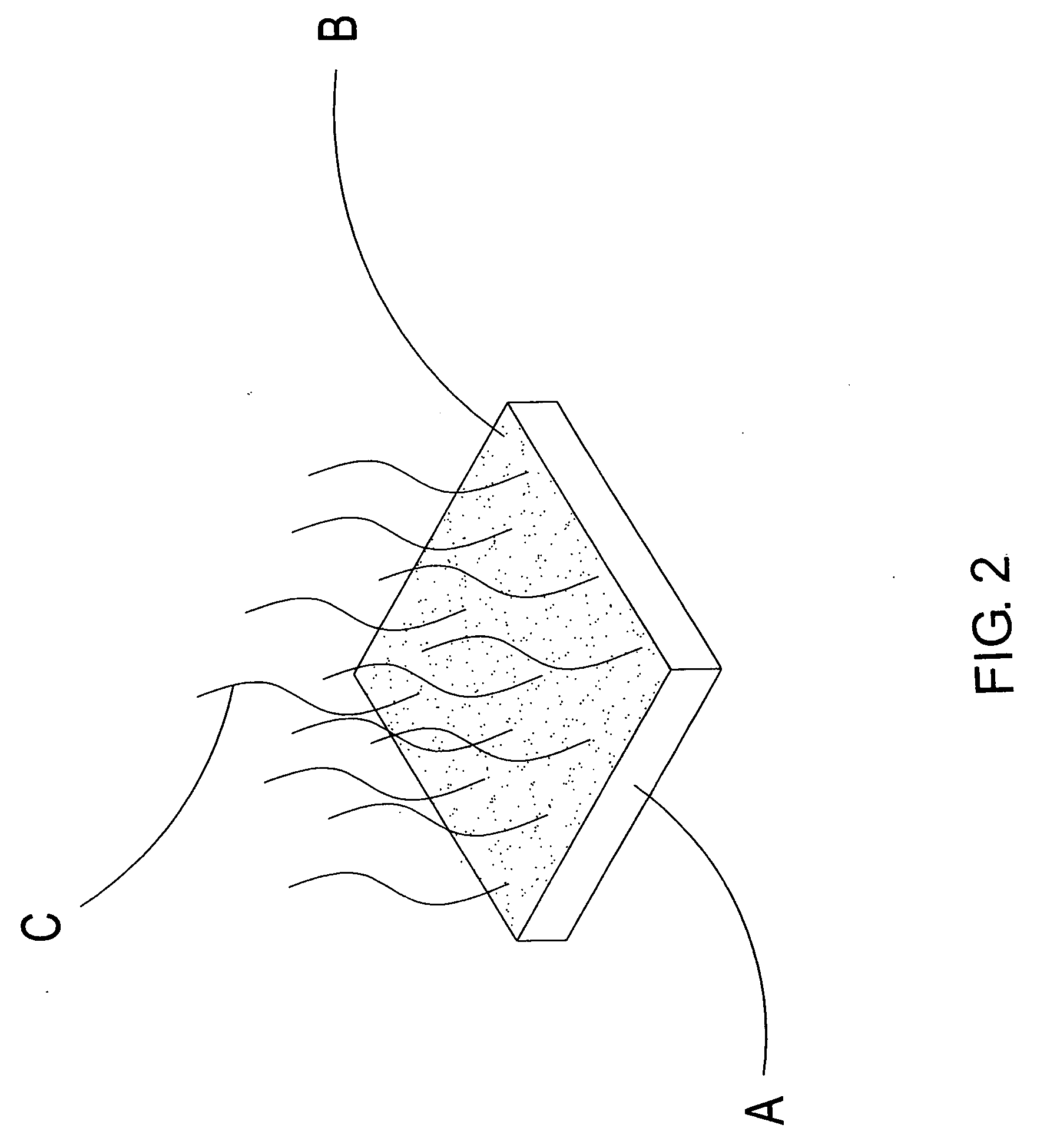Method of transfer printing
- Summary
- Abstract
- Description
- Claims
- Application Information
AI Technical Summary
Benefits of technology
Problems solved by technology
Method used
Image
Examples
Embodiment Construction
[0021] As shown in FIG. 1, which is a workflow consisting of an object A, an object (adhesive) A1, an adhesive B, volatilization C, a transfer film D, exerting pressure E, and removing a plastic film F. The transfer film D is provided with a plastic film D1, a mold release agent D2, and an ink D3, wherein the ink D3 is glued on the plastic film D1 through the mold release agent D2.
[0022] A feature of the workflow lies in that under a condition of normal temperature of about 10 to 45 degree Celsius, the adhesive of a solvent-type B is uniformly pasted on the object to be printed transferring A, and to uniformly cover the transfer film D on the object (adhesive) A1 after the adhesive B volatilizes to 40 to 60% (about a level of not sticking a hand upon touching the adhesive B).
[0023] A pressure E is exerted on the object (adhesive) A1 covered with the transfer film D. Depending on the form and type of the object A, the pressure exerted E is about 5 to 100 kilograms.
[0024] After acc...
PUM
 Login to View More
Login to View More Abstract
Description
Claims
Application Information
 Login to View More
Login to View More - R&D
- Intellectual Property
- Life Sciences
- Materials
- Tech Scout
- Unparalleled Data Quality
- Higher Quality Content
- 60% Fewer Hallucinations
Browse by: Latest US Patents, China's latest patents, Technical Efficacy Thesaurus, Application Domain, Technology Topic, Popular Technical Reports.
© 2025 PatSnap. All rights reserved.Legal|Privacy policy|Modern Slavery Act Transparency Statement|Sitemap|About US| Contact US: help@patsnap.com



